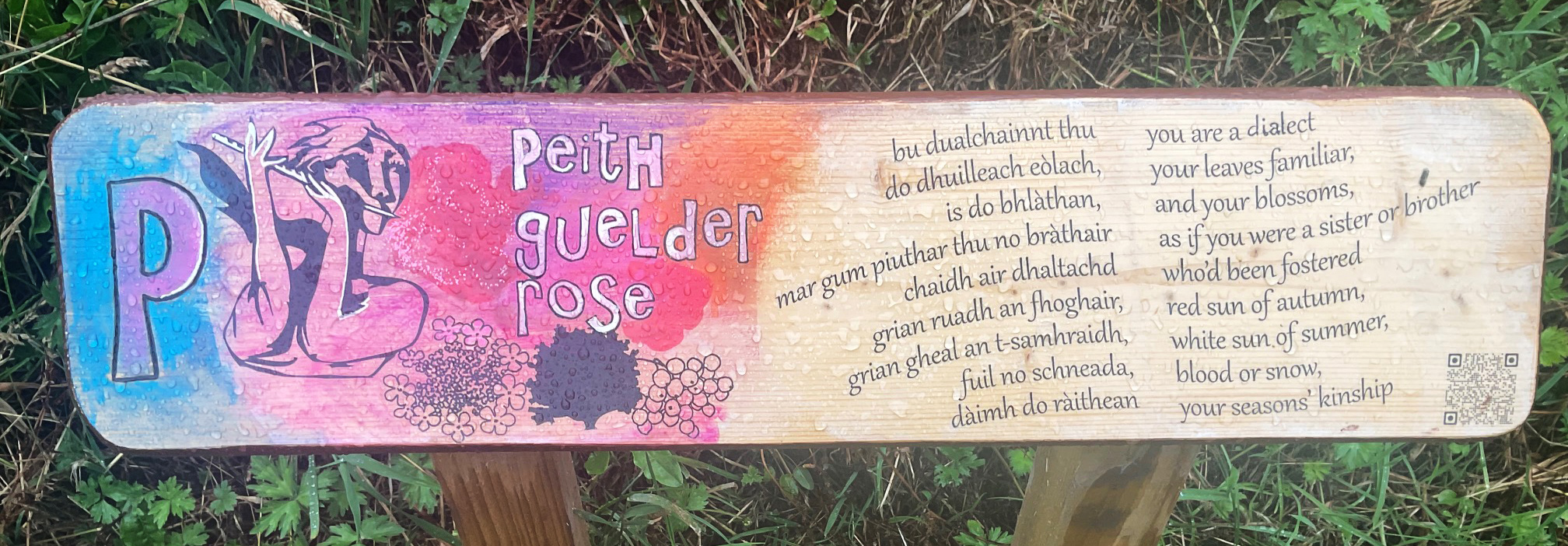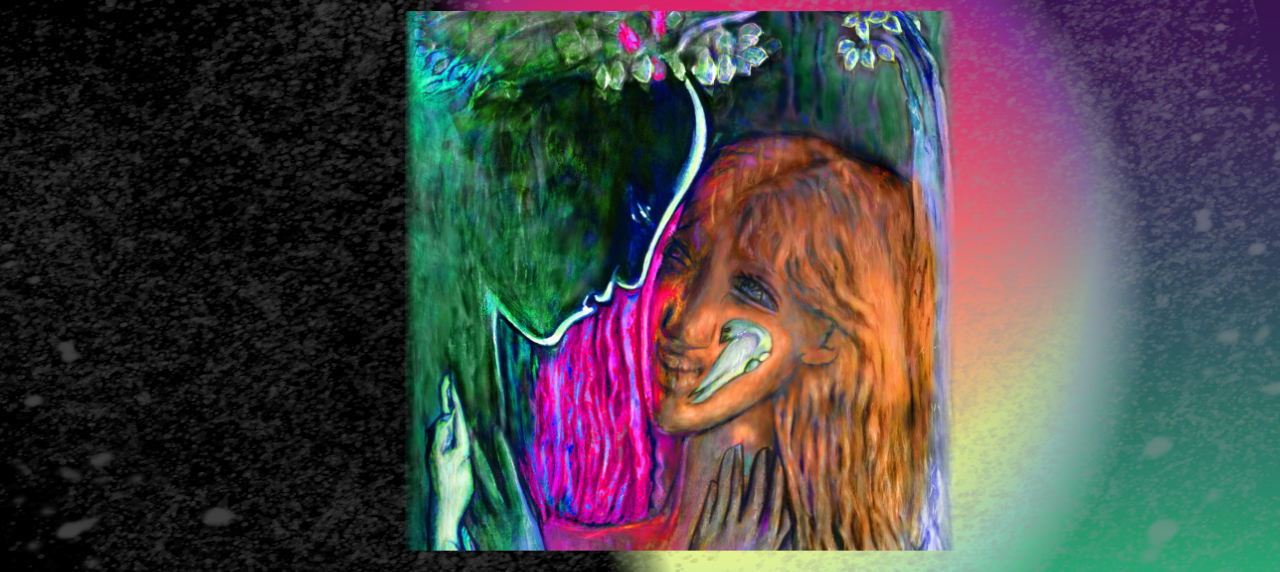
B L N F S H D T C M G P R A O U E I


bu dualchainnt thu
do dhuilleach eòlach,
is do bhlàthan,
mar gum piuthar thu no bràthair
chaidh air dhaltachd
bu dualchainnt thu
nach tuig mi buileach,
ach d’fhuaimean eòlach,
gheibh iad fàilte
grian ruadh an fhoghair,
grian gheal an t-samhraidh,
fuil no schneada,
dàimh do ràithean
you are a dialect
your leaves familiar,
and your blossoms,
as if you were a sister or brother
who’d ben fostered
you are a dialect
i can’t quite understand,
but your familiar sounds
will be welcomed
red sun of autumn,
white sun of summer,
blood or snow,
your seasons’ kinship
A deciduous, spreading, asymmetrical shaped shrub, growing to fifteen feet tall, peith/ guelder rose is also known as walter-elder and whitten. Other names for this shrub include cramp bark and snowball tree and all are species of viburnum and native to Europe and Asia. Excellent in damp soil, scrubland and thriving on limestone, guelder rose prefers to grow at low altitudes and in semi-shade. Its three to five lobed leaves grow opposite one another, being two to four inches long and broad, with a rounded base and jagged outer edge. Looking somewhat similar to a maple leaf, guelder rose leaves can be distinguished by their slightly wrinkled surface.
Growing from the top of the stems, its flat, cream/white, 'lace-cap' flowerheads appear in May or June and are visited by many insects including hoverflies. The fruit is a globose bright red drupe just over three inches diameter, each containing a single seed. Although dispersed by birds, these large clusters of round, brilliant glossy red fruits are almost translucent, and remain on the plant throughout the winter. Beetles will feed on it throughout adult and larval stages. Eaten raw, the fruit is edible in small quantities, yet has a very acidic taste that can be mildly toxic, causing vomiting. It can however be made into a jelly or even a cranberry substitute, or as a preserve. The dazzling berries are slightly flattened laterally.
Guelder rose has white hermaphrodite flowers, produced in corymbs (multiple flowerheads) of up to four and a half inches diameter. Each corymb comprises a ring of outer sterile flowers that are one and a half inches diameter with conspicuous petals that act as lure to the much smaller fertile flowers in the centre, that are pollinated by insects.

Medicinally, the guelder rose has extensive uses, since both leaves and fruits are anti scorbutic, emetic and laxative, while its bark contains 'scopolamine', that can sedate the uterus when used dried in a tincture, known as "Cramp Bark", to alleviate painful menstrual cramps. Its homoeopathic remedy is made from the fresh bark, for a cardiac tonic and cardiovascular muscle relaxant.


Guelder rose is sometimes used as a tea, for a herbal medicine to treat cramps, swollen glands and asthma, guelder rose is anti-spasmodic, and good for colic, constipation, irritable bowel syndrome, as well as the physical symptoms of nervous tension, spasms and debility. A red dye is obtained from the fruit and can be made from the dried berries, while the wood can be used to make skewers. genus viburnum; family (adoxaceae); species (viburnum opulus) A variety of beetles are supported by guelder rose, in both larval and mature stages

Peith, or guelder-rose contains the important winter feast of Samhain - traditionally Nov 1 - now called All Saints, with Hallowen preceding it. Samhain began the Celtic year, although, perhaps confusingly, not the calendrical year (which begins with Beithe/birch). The berries often stay through the winter, a translucent glow in the snow and perhaps explains the symbol for Ukrainain symbolises of fighting spirit.
Girls 'like Guelder Roses' appear in Ukranian songs, symbolising beauty, while in Siberia, guelder rose berries were sometimes fermented and distilled into an alcoholic drink. Another tree-letter, ngetal, or reed (the ng pronounced as in the french sang for blood), can appear in place of guelder rose, but became largely obsolete at some stage BC.
